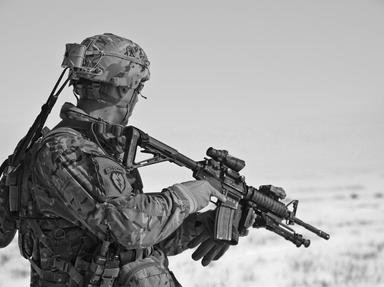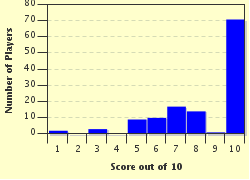Quiz Answer Key and Fun Facts
1. What name is usually applied to this component, the tube down which the bullet initially travels towards its target?
2. Which component of a weapon does the sear restrain until the trigger is squeezed?
3. The common term used to describe the group of components that helps to prevent any inadvertent discharges is the ____ catch?
4. The butt, also known as the stock, the pistol grip (where it is fitted) and the hand guard are usually referred to collectively as the ____?
5. The function of this component is to control the mode of fire and is most commonly found on small arms designed primarily for the military.
6. This is the name given to the detachable box-like component that contains the ammunition.
7. Consisting of smaller component parts often referred to as the blade and the leaf, by what name are this pair of assemblies commonly referred to?
8. This is the assembly that houses the firing pin and which feeds the ammunition into the chamber before firing.
9. What are the names of the components, where they are fitted, that are operated by explosive gases and which assist in cycling the weapon?
10. The ____ and ejector are both components that remove the empty cases from the weapon.
Source: Author
SisterSeagull
This quiz was reviewed by FunTrivia editor
stedman before going online.
Any errors found in FunTrivia content are routinely corrected through our feedback system.

